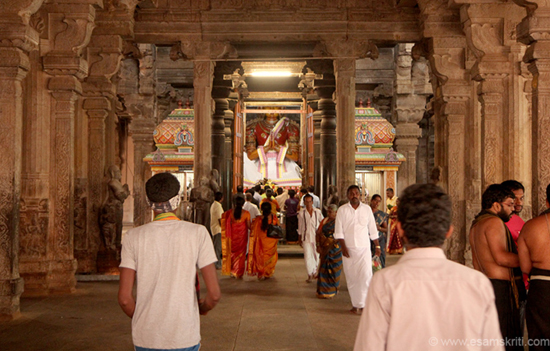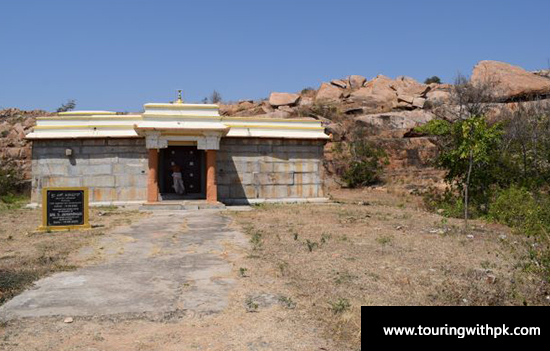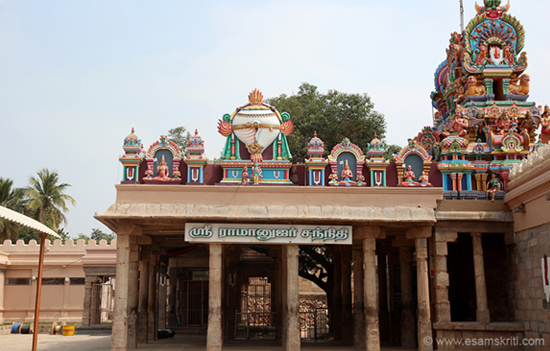- Know about Ramanuja’s thoughts, writings, spirit of Bhakti and Statue of Equality.
As part of the 1000th year
birth anniversary celebrations of Acharya Ramanuja read that Prime Minister
Modi was going to inaugurate a 216 feet statue of the Acharya in February 2022.
It is called the Statue of Equality. The word equality is a western word so
wonder why it is given that name. The Swamis are learned and surely had reasons
for doing so (read Here). The name reminded me of the Statue of Unity i.e.
of Sardar Patel.
The total height of the Statue of Equality is 216 feet and Ramanuja’s statue is 108 feet. To see visit Divya Saketam i.e. about 40kms from Hyderabad and part of the JIVA Campus. To know
more and see well explained in picture
I had earlier visited Ramanuja’s Samadhi at Srirangam Temple, Trichy. This compilation is a tribute to Sri Ramanuja.
Ramanuja was born in 1016-17. He spent his childhood days in Sriperumbudur,
the village of his birth. At the age of 16 he was married to Rakshakambal.
First he lived in Kanchipuram and
was the disciple of Advaita philosopher Yadavaprakasa. Being dissatisfied with
the teachings of spiritual monism, he began to study the work of the Alvars and
found solace in them. After becoming successor of his Guru he settled in
Srirangam, Trichy. In 1096 A.D. he took refuge in the court of the Hoysala prince
Vishnuvardhana.
How should Ramanuja be remembered?
Dr
Prema Nandakumar wrote in The Hindu, “Is he a fine-tuned philosopher or a poet? Does his sociological thinking exceed the commentator? Does he loom large as a temple-builder or as a management expert? Does his concern for helping the common man out-top his blazing spirituality? Is he greater as a student or as a teacher? A deeper and wider engagement in his life and ministry makes it very, very difficult to decide.
“But one thing is clear. His virtue was compassion: his means, integration. The two main reasons why Sri Ramanuja remains perfectly relevant even today.
“Sister Nivedita said that the history of India is the land itself. Applied to Sri Ramanuja, we can read his life in the temples, the rituals he set up, in his philosophy and poetry, and his untiring and patient moves to bring down man-made differences and integrate the society by applying the ideal of compassion. Since he did all this by his personal example and involvement, and remained active throughout his life, he became the progenitor of the Neo-Vedantists of modern Indian renaissance.
“Hadn’t he opened the doors of spirituality for one and all, as Swami Vivekananda had pointed out in his lecture on ‘The Sages
of India’?
“He (Ramanuja) felt for the downtrodden, he sympathised with them. He took up the ceremonies, the accretions that had gathered, made them pure so far as they could be, and instituted new ceremonies, new methods of worship, for the people who absolutely required them. At the same time he opened the door to the highest; spiritual worship from the Brahmin to the Pariah. That was Ramanuja's work. That work rolled on, invaded the North, was taken up by some great leaders there; but that was much later, during the Mohammedan rule; and the brightest of these prophets of comparatively modern times in the North was Chaitanya.” Quote by Dr Nandakumar ends.
 Garuda at Srirangam temple, Trichy.
Garuda at Srirangam temple, Trichy.
So what is Ramanuja’s doctrine?
“His doctrine is called Visisht-advaita or qualified monism. There
are three eternal principles i.e. chit
(individual soul), achit (the
insenstate world) and Isvara (the
Supreme Soul). The individual soul and the insensate world are attributes of
the Supreme Soul and form his body. The Supreme Soul, which occurs in the
subtle form before creation, develops itself in the form of the universe (which
in its subtle form before creation is called Prakriti) at the time of creation. The Supreme Soul or God is the
creator, preserver and destroyer of the world. He is thus the material and
efficient cause of the world and is a composite personality having the
individual soul and the inanimate world as his body. He has no defects and is
the granter of boons to his devotees.
“He has five different aspects, namely Para or the highest, Vyuha in which he appears in the four
forms of Vasudeva, Sankararshana, Pradyumna and Aniruddha for creation and
other purposes, Vibhava in which he
appears as the ten incarnations, Antaryamin
in which he lives in the hearts of all and Pratima or idol. The conception of Krishna and Radha is absent from Ramanuja’s Vaishnavism. Ramanuja regarded Bhakti to be the same as the Upanishadic upasana or meditation.” 1 Pg. 437, 438
Ramanuja learnt Vedanta from Yadavaprakasa. He preached the doctrine of salvation through bhakti, which he made out to be the central teaching of the Upanishads, the Gita and Brahmasutra. He restored many Vaishnava temples. “His influence is seen throughout the later period through Vallabhacharya, Chaitanya Mahaprabhu, Ramananda, Kabir, Guru Nanak, and others being largely indebted to his theistic idealism.” 1 Pg. 337
 Narasimha temple Thondanur.
He also lived in Melakote, both in Karnataka. In temple is a basket used by the
Acharya over 950 years ago.
Narasimha temple Thondanur.
He also lived in Melakote, both in Karnataka. In temple is a basket used by the
Acharya over 950 years ago.
According to Statue of Equality site, Ramanuja became
the preceptor of the Bhakthi movement and the source for all other Bhakthi
Schools of thought, was an inspiration for mystic poets like Kabir, Meerabai,
Annamacharya, Bhaktha Ramdas, Thyagaraja and many others and initiated the
concept that Nature and her resources like Water, Air, Soil, Trees etc., are
sacred and should be protected from pollution.
The site states that “Sri
Ramanujacharya wrote 9 scriptures, the Navrathnas namely Vedartha-Sangraha- A treatise presenting
the tenets of Visishtadvaita, a reconciliation of
different conflicting srutis, Sri Bhashya-
A detailed commentary on the Vedanta Sutras. Sri
Bhashyam is Sri Ramanuja’s magnum opus, which is the greatest commentary on Bramha Sutras. Gita-Bhasya- A detailed commentary on the
Bhagavad-Gita, Vedanta-Dipa– A brief commentary on the Vedanta Sutras, Vedanta-Sara- Another brief commentary on the
Vedanta Sutras meant for beginners, Saranagati-Gadya- A prayer of complete surrender
to the lotus feet of Lord Srimannarayana, Sriranga-Gadya-
Manuals of self-surrender to Lord Vishnu and Shri Vaikuntha-Gadya-describes Shri Vaikuntha-loka and the position of the liberated souls.”
Ramanuja gave up his body in 1137 a.d. i.e.
lived for 120 years. After his death, the Sri-Vaishnavas were gradually divided
into two sects called Vadakalai (i.e. the school of northern learning) and
Tenkalai (the school of southern learning). One believed that moksha was more
easily obtained through the Vedas, Upanishads and Gita than through the
Prabandhas, called the Tamil Veda. Ramanuja gave equal importance to both
classes of scriptures.
 Ramanuja Samadhi at Srirangam Mandir, Trichy.
Ramanuja Samadhi at Srirangam Mandir, Trichy.
A brief note on comparison with Acharya Sankara’s thoughts
“Sankara’s Brahma was however, an impersonal being, which could not evoke any devotional emotion and prayers to whom were meaningless. But man in sorrow required a solace. We thus find thinkers and writers with a theistic bent of mind attempting to reinterpret the Vedanta.” 1 Pg. 459
“One such writer was Ramanuja. The first point was Sankara’s theory of knowledge and his theory of Brahma as a substance without attribute. Ramanuja challenged this entire position. Brahma was not a mere ‘is’ without any quality. The world is in him like a quality in a thing, like heat in wire. The world is his expression, his body, so to say. Brahman is a personal being, having infinite qualities of goodness and purity. He is in fact the same as Vishnu of the Vishnu
Purana and the Vaishnavas. Ramanuja’s commentary on the Vedanta-sutra is interspersed with profuse quotations from the Vishnu Purana etc. His conclusions are based on these quite as much as on the sutras of Vedanta as interpreted by him.” 1 Pg. 460
“There was another important point on which Ramanuja differed from Sankara. According to Ramanuja religious performances (karma) as explained by Purva Mimamsa, were a necessary preliminary to and a preparation for the study and practice of the Vedanta. Further, knowledge enough was not enough to save the soul. It was to be followed by Bhakti (devotion to God) which lead man to his destination.” 1 Pg. 461
My intent is not to get into a Sankara
vs. Ramanuja argument. Only sharing excerpts of their approach. In Indic
thought, there are different paths of self-realization, all co-exist. In fact,
it is my belief that re-discovery of Bhakti as stated by Ramanuja might benefit
Indians and probably create something unique.
In the context of why Jainism
survived in India was said that unlike Buddhism it was free from the influence
of Tantric ideas. So also Southern India was also largely free from the
degrading Tantric ideas of the North (no North vs. South please). This was
mainly due to the rise of great Acharyas like Ramanuja and Madhava. The Advaita
doctrine of Sankara cut at the very root of bhakta-vada. Ramanuja solved Sankara’s problem and place the bhakti-cult on a firm philosophical basis by expounding the doctrine of Visishtavaita-vada, which was a qualified form of Sankara’s monism. 1 Pg. 408
What is the difference between Dvaita, Advaita and Vishishtavaita?
Excerpts from what Gyan Rajhans wrote in Speaking Tree, “Dvaita- Madhvacharya propounded this philosophy. It considers Brahman and Atman as two different entities, and Bhakti as the route to eternal salvation. Advaita- This is the oldest school of Vedanta, and it states that Brahman is the only reality and the world is illusory (Maya). Ignorance of the reality is what causes suffering, and liberation can be obtained only by true knowledge of Brahman. It states that both the individual self (Atman) and Brahman are the same, and knowing this difference causes liberation. Vishishtavita- This philosophy was pioneered by Ramanujacharya during the 11th century. Vishishtadvaita literally means the Unique Advaita, that is, Advaita with some amendments. While it accepts Brahman as the unified whole, it states He is characterized by multiple forms.”
Ramanujacharya, thus, created a third pole between Dvaita and Advaita.
The author has only compiled this
piece with references and does not claim any originality. This compilation is
done in the spirit of Bhakti. Do tell how we can do better.
References
1. The History and Culture of
Indian People 5 published by Bharatiya Vidya Bhawan.
2. Statue
of Equality site
3. Story
of Ramanuja
4. Sri Ramanuja – the great integrator
Also read
1. Acharya
Sankara-Delineator of India
2. Sringeri Mutt
3. Annakshetra
Sringeri Mutt
4. Statue of Equality
5. Why call it Statue
of Equality
6. Sri Ramanuja – lessons for all from a life divine
7. Srirangam
Temple Trichy
8. Indian
Culture protects plants and trees
9. Hinduism
is the most democratic philosophy of mankind says Chinna Jeeyar Swami – “This is where Ramanuja’s core philosophy of co-existence of “sareera” (body) and “sareeri” (soul) has to be understood properly to understand the world. There are, and must be, opportunities for everyone, and an equal chance has to be made available for all to gain. If we consider the universe as one body, no limb tries, or should try, to dominate another; yet, each organ has its difference, its specific function; none superior, yet each vital for larger harmony.”